| |
Have a heart
Compassion is an emotional response and attitude grounded in empathy. It enables us to connect to human suffering with care and understanding, and to act in ways that bring comfort to those who need it.
Research shows that compassion plays a key role in helping children become engaged, caring and optimistic adults. Developing compassion is akin to developing muscle strength – the more it’s used, the stronger it gets.
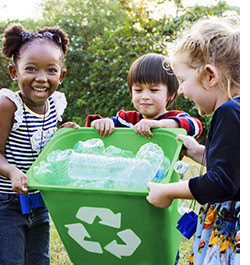
So how do you teach students to care as much about others in their community as they do about themselves? For starters, check out the Ethics section of our Energy Explorer website for classroom lessons and activities on a range of ethics principles such as compassion, tolerance and respect. Going further, you can promote class projects and after-school activities that help students compassionately connect with others, whether on a local, national or global level. GenerationOn is one organization that provides programs and tools to engage kids and teens in service and volunteer work.
Inspiring a spirit of service and volunteerism helps kids develop their compassion muscles, ones they’ll continue to use throughout their lives. In giving them regular opportunities to serve others, you do your part to help spread compassion in a world that surely needs it!
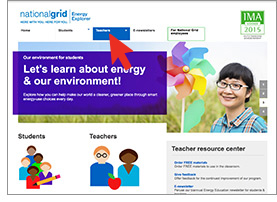
Explore all our
teacher resources
Our Energy Explorer website at ngridenergyworld.com is designed so that you can use it with little or no planning. The “Teachers” tab for each thematic section (Ethics, Electrical & Natural Gas Safety, Energy Efficiency and Environment) includes many helpful teacher resources:
-
One-page Student Worksheets and Answer Keys help students review key content.
-
Teacher Tips help you explain all experiments.
-
E-books have companion Teacher’s Guides with background and discussion suggestions for each page, plus downloadable and reproducible Pre/Post Tests.
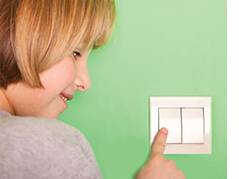 Wise up and power down
Did you know the annual energy bill to run America’s K–12 schools is a staggering $8 billion? That’s more than what’s spent on textbooks and computers combined.
This fall, you and your students can do a lot to save energy at your school. By preventing energy and water waste, not only will you help reduce greenhouse gas emissions, you can help shrink your school’s electricity and natural gas bills. Below are some simple tips you can implement in your classroom. Our School energy inspection has additional ideas you can review with your class.
- Have kids create “Save Energy” signs as reminders to turn off lights and computers when not in use, before recess and lunch, and after school, and “Save Water” signs for sinks.
- Remind students to turn off sink faucets when they are finished using them, and to report faucet and drinking fountain leaks to you or the custodian.
- Encourage students to keep doors and windows closed when heating or cooling equipment is in use.
- Assign rotating volunteer “Energy Monitors” to take responsibility for one or more of these practices.
When students become more energy conscious at school, they often bring home what they’ve learned. Ask your students to use our Energy-saving tips and to do our Home energy inspection with their families.
To further engage students in using energy resources more sustainably, check out the games, videos, experiments, activities and e-books in the Environment and Energy efficiency sections of our websites.
Safety on the road
Encouraging kids to bike or walk to school supports saving energy and reduces air pollution, and it’s also an opportunity to point out some important safety tips for non-vehicular travel. Consider having students develop posters to highlight pedestrian and bicycle safety and putting them up in your classroom. Key tips for posters are below.
For more safety-related activities, tips and resources, visit the Electrical safety and natural gas safety sections of our website.
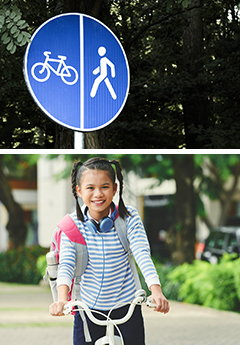 Pedestrian safety Pedestrian safety
-
Cross the street at corners only, using crosswalks and respecting traffic signals.
-
Don’t run out into the street for any reason.
-
Walk with a family member, friend or group of friends when possible.
-
Walk in well-traveled, well-lit areas. Avoid routes where you can’t be seen or heard.
Bicycle safety
-
Always wear a helmet – it helps prevent injuries in case of falls.
-
Ride with traffic, obey all traffic signals and signs and signal your turns.
-
If riding after dark, make sure your bike has a reflector and a light, and wear reflective clothing.
-
Regularly check to make sure your brakes are in good condition.
-
Watch the road ahead, avoiding puddles, potholes, gravel, broken glass and drainage grates.
Caution with strangers
If a stranger approaches you, offers a ride, or does anything to make you uncomfortable, remember the safety rule: “No, Go and Tell.”
-
No: Say a loud “no!” to the stranger.
-
Go: Leave the area.
-
Tell: Report the encounter to a trusted adult such as a neighbor, firefighter, police officer, teacher, relative or parent.
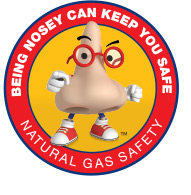 Recognize and respond to gas leaks Recognize and respond to gas leaks
On very rare occasions, natural gas may leak from an underground pipeline. Use your senses to spot a natural gas leak as soon as it happens: SMELL for rotten eggs, which has a similar odor to the chemical added to natural gas; LOOK for a hazy white cloud in the air or bubbles in a puddle or water outside; LISTEN for hissing or blowing sounds of natural gas escaping from pipes. If you suspect a gas leak:
-
Go far away from the area immediately. Do NOT go back until safety officials say it is safe.
-
Ask a trusted adult to call 911 and National Grid.
-
Warn others to stay away.
-
Unless you are a safe distance away, do not use fire or electricity – a spark from a match, phone or electrical device (even a doorbell or radio) could ignite the gas.
Beware of downed power lines
With storms in some areas becoming more frequent and intense, it’s important to be aware of the dangers of downed power lines. First rule: Stay far away from them and call 911! Be especially alert for downed power lines after flood events, high winds or snowstorms.
Smell Gas. Act Fast.
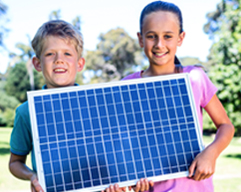 Think renewable: Think renewable:
Spotlight on solar
Today’s shifting energy climate has brought a growing focus on harnessing the earth’s renewable resources such as the sun, wind, biomass, geothermal energy and hydropower. If you plan to study renewable energy with your students this semester, consider the following for spotlighting photovoltaic (PV) solar technology.
How PV solar energy works
Using PV cells is one of several ways to “harvest” energy from the sun. PV cells are made of silicon, a chemical element. When the sun’s rays hit these cells, a chemical reaction occurs that frees up electrons and creates electricity. Because each cell produces only a small amount of electricity, PV cells need to be combined together into larger solar panels to provide enough energy to be useful.
Solar cells in the classroom
To understand how a PV cell works, you can build a small system in the classroom. Hobby and electronics stores sell solar kits that consist of one or more PV cells, a rotor or wheel, a motor and connecting wires and clips.
The kit’s rotor (propeller) or wheel connects to the motor and shows how fast the motor is running. Placing a lamp close to the PV cell and then moving it away shows you how the strength of the light affects the amount of electricity produced. When the lamp is close to the cell, there’s more electricity and the motor runs faster.
Volts, amps and watts
Each PV cell produces one-half volt of electricity. The number of volts indicates the force with which the electrons are moving. The number of amperes (amps) shows the amount of electrons moving through the wire and increases with the number of individual PV cells on a solar panel.
Electric power (watts) equals volts multiplied by amps. You can increase the wattage on the model by hooking several PV cells to each other. Observe that by increasing the power, the motor spins faster. You can also experiment with different ways to connect the PV cells to each other and see how that affects the speed of the motor.
The Environment section of our website includes more information on solar power and other forms of renewable energy as well as sustainable energy use practices.
|
|
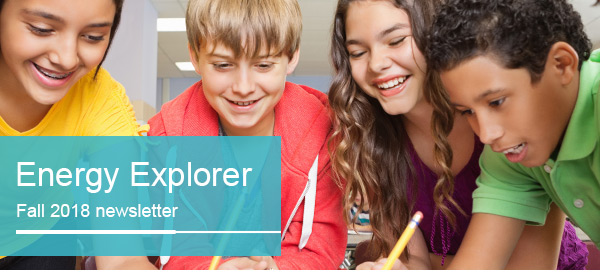



 Pedestrian safety
Pedestrian safety



